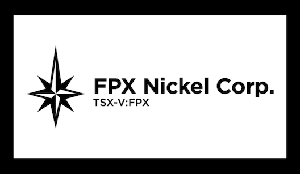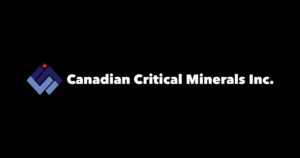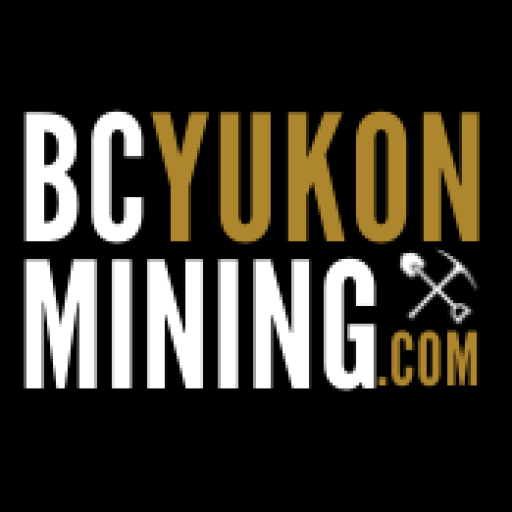| Vancouver, British Columbia: FIREWEED ZINC LTD. (“Fireweed”) (TSXV: FWZ) is pleased to announce further results from the 2021 drilling program at the Macmillan Pass project, Yukon, Canada. Results from this step-out hole continue to show that Boundary Zone is growing and expand the known extent of the wide zones of vein-hosted mineralization. |
Highlights A new, copper-rich style of mineralization was encountered in NB21-005, grading 1.54% copper, 5.42% zinc, 0.04% lead, and 5.6 g/t silver over 2.00 m. Step-out hole NB21-005 intersected a wide zone of vein hosted mineralization at Boundary Zone grading 2.35% zinc, 0.01% lead, and 4.6 g/t silver over 203.05 m, extending the mineralized zone to depth. The broader 203.05 m intersection included wide higher-grade zones such as 34.45 m of 4.61% zinc, 0.01% lead, and 8.9 g/t silver. Brandon Macdonald, CEO, stated: |
| “These intriguing drill results show a new style of mineralization and brings copper into the mix at Boundary Zone. This is an encouraging sign of the system becoming hotter as we continue to expand the known zone of mineralization with more and more step-outs. This is the first discovery of meaningful copper grades in core at the Macmillan Pass project and we are excited to follow up on this new style of copper-zinc mineralization in the coming drill programs”. |
Boundary Zone Drilling Results Hole NB21-005 was drilled as a down-dip step-out to the known zinc mineralization at Boundary Main and intersected 203.05 m of 2.35% Zn, 0.01% Pb, and 4.6 g/t Ag including wide zones of significantly higher grade such as 34.45 m of 4.61% Zn, 0.01% Pb, and 8.9 g/t Ag and 38.54 m of 3.47% Zn, 0.01% Pb, and 4.3 g/t Ag. Vein-hosted sphalerite and disseminated sphalerite mineralization was encountered within conglomerates, mudstones and carbonate-altered mafic volcaniclastic rocks. A narrow, 2.00 m intersection of copper-rich mineralization comprised brecciated rock with a network of thin pyrite-sphalerite-chalcopyrite veinlets and graded 1.54% Cu, 5.42% Zn, 0.04% Pb and 5.7 g/t Ag – a style of mineralization not previously encountered on the Macmillan Pass project. The copper-rich intersection is located at a vertical depth of only 60 m from surface. Drill hole NB21-005 confirmed a large width for the zone of zinc mineralization originally intersected in down-dip hole NB20-002 (see Cross Section A-A’). Boundary Zone has now been tested to a vertical depth of approximately 350 m and the mineralized zone remains open at depth. |
Table 1: Drill Results, Boundary Zone. |
 |
| SM – semi massive sulphide; V – vein; R – replacement; L – laminated; incl. – including. 1True widths of stratiform, laminated mineralization, and semi-massive mineralization are estimated to be approximately 60 to 80% of intersected widths. Vein-hosted mineralization is interpreted to be a stockwork style with an undetermined true thickness. †Low recovery zone, core recovery indicated in parentheses. |
Notes on sampling, assaying, and data aggregation: The diamond drill core logging and sampling program was carried out under a rigorous quality assurance / quality control program using industry best practices. Drill intersections in this release are all HQ3 (split tube) size core (61.1mm / 2.4-inch diameter) with recoveries typically above 85% unless otherwise noted in the table of results. After drilling, core was logged for geology, structure, and geotechnical characteristics, then marked for sampling and photographed on site. The cores for analyses were marked for sampling based on geological intervals with individual samples 1.5 m or less in length. Drill core was cut lengthwise in half with a core saw; half-core was sent for assays reported in this news release, and the other half is stored on site for reference. Bulk density was determined on site for the entire length of each sample assayed by measurement of mass in air and mass in water. Sample duplicate bulk density determinations and in-house bulk density standard determinations were each made at a rate of 5%. Since 2017, four in-house bulk density standards (mineralized drill core from the Tom deposit that span a range of densities) have been used and show an acceptable long-term precision. Certified standard masses are used to calibrate the scale balance used for bulk density determinations. A total of 5% assay standards or blanks and 5% core duplicates are included in the sample stream as a quality control measure and are reviewed after analyses are received. Standards and blanks in 2021 drill results to date have been approved as acceptable. Duplicate data add to the long-term estimates of precision for assay data on the project and precision for drill results reported is deemed to be within acceptable levels. Samples were sent to the Bureau Veritas preparation laboratory in Whitehorse, Yukon, where the samples were crushed and a 500 g split was sent to the Bureau Veritas laboratory in Vancouver, B.C to be pulverized to 85% passing 200 mesh size pulps. Clean crush material was passed through the crusher and clean silica was pulverized between each sample. The pulps were analyzed by 1:1:1 Aqua Regia digestion followed by Inductively Coupled Plasma Mass Spectrometry (ICP-ES/ICP-MS) multi-element analyses (BV Code AQ270). All samples were also analyzed for multiple elements by lithium borate fusion and X-ray fluorescence analysis (XRF) finish (BV Code LF725). Over-limit Pb (>25.0%) and Zn (>24.0%) were analyzed by lithium borate fusion with XRF finish (BV Code LF726). Silver and copper are reported in this news release by method AQ270, and zinc and lead are reported by LF725 or LF726. Bureau Veritas (Vancouver) is an independent, international ISO/IEC 17025:2005 accredited laboratory. Results in this news release are length and bulk-density weighted averages as would be used in a Mineral Resource estimate. Readers are cautioned that in Fireweed news releases prior to 2020, only length weighted assay averages were reported which may result in slightly lower (under-reported) average values. Length and bulk-density weighted averages have been reported as these most accurately represent the average metal-content of the intersections. Qualified Person Statement Technical information in this news release has been approved by Jack Milton, P.Geo., Ph.D., Chief Geologist and a ‘Qualified Person’ as defined under Canadian National Instrument 43-101. |
About Fireweed Zinc Ltd. (TSXV: FWZ) Fireweed Zinc is a public mineral exploration company focused on zinc-lead-silver and managed by a veteran team of mining industry professionals. The Company is advancing its district-scale 940 km2 Macmillan Pass Project in Yukon, Canada, which is host to the 100% owned Tom and Jason zinc-lead-silver deposits with current Mineral Resources and a PEA economic study (see Fireweed news releases dated January 10, 2018, and May 23, 2018, respectively, and reports filed on www.sedar.com for details) as well as the Boundary Zone, Tom North Zone and End Zone which have significant zinc-lead-silver mineralization drilled but not yet classified as mineral resources. The project also includes large blocks of adjacent claims (MAC, MC, MP, Jerry, BR, NS, Oro, Sol, Ben, and Stump) which cover exploration targets in the district where previous and recent work identified zinc, lead and silver prospects, and geophysical and geochemical anomalies in prospective host geology. Additional information about Fireweed Zinc and its Macmillan Pass Zinc Project including maps and drill sections can be found on the Company’s website at www.FireweedZinc.com and at www.sedar.com. ON BEHALF OF FIREWEED ZINC LTD. “Brandon Macdonald” CEO & Director |









